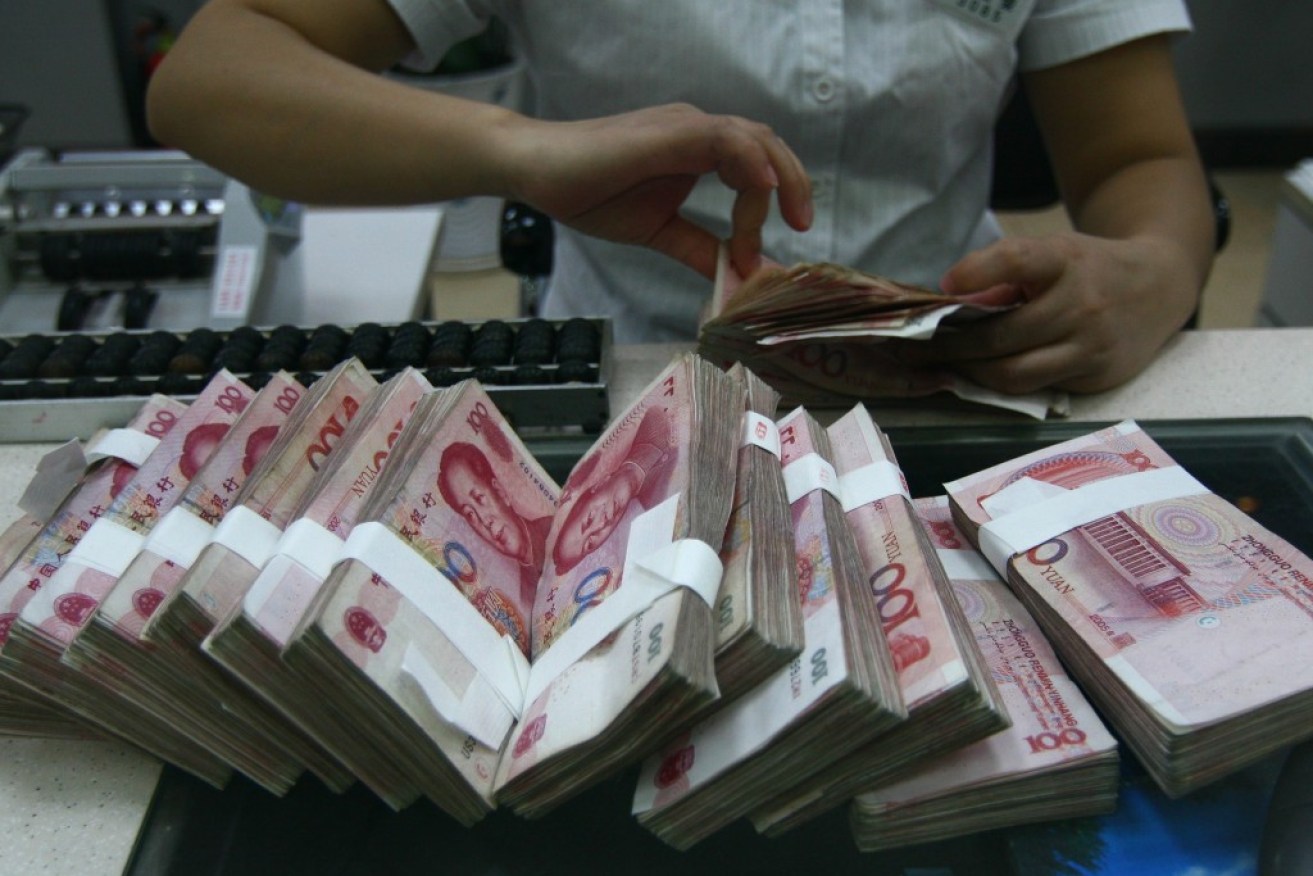WHAT HAPPENED? Global markets fell on Monday on heightened concern about the economy in China, where trade in mainland shares was halted following a 7 per cent drop.
The selloff followed surveys showing factory activity in the world’s second-largest economy shrank sharply in December. China’s central bank also fixed the yuan at a four-and-a-half-year low.
WHICH MARKETS WERE HIT? Pretty much all of them.
In the US, the S&P 500 and the Nasdaq had their worst starts to a year since 2001 with declines of 1.53 per cent and 2.08 per cent respectively, while the Dow Jones industrial average closed down 1.58 per cent for its worst opening to a year since 2008.
London’s FTSE 100 dipped 2.39 per cent, the CAC 40 in Paris dropped 2.47 per cent, and Germany’s DAX 30 slumped 4.28 per cent.
WHY THE GLOOM? China’s size makes it a bellwether for global markets.
A slowing Chinese economy means lower demand for imports, while the devaluation of the yuan weakens the Chinese currency and makes those imports – such as Australian resources – more expensive.
On the flip side, the devaluation makes Chinese exports cheaper to the rest of the world, which could be bad news for producers in other countries.
WHAT DOES IT MEAN FOR AUSTRALIA? The Australian market looks set to continue the gloomy, risk-off trade.
The benchmark S&P/ASX200 index was down 0.48 per cent on Monday and, at 0930 AEDT, the March share price index futures contract was down 34 points at 5,218.
China sell-off sparks global reaction
Global equity markets have fallen sharply, while gold and bonds rose, after a 7 per cent slide in Chinese shares.
The offload was sparked by weak economic data that rekindled worries over global growth on the first day of trading in 2016.
Rising tensions in the Middle East also increased demand for safe-haven assets. Crude prices rose above $US38 a barrel at one point as some speculated a breakdown in diplomatic ties between Saudi Arabia and Iran could result in reduced oil supplies.
But crude later retreated on worries that the weak Chinese data could portend slower worldwide growth, which also hurt Wall Street and sent key stock indexes more than 1 per cent lower.
The S&P 500 and Nasdaq posted their worst start to a year since 2001, while it was the worst for the Dow since 2008.
Emerging markets were especially hard-hit by the China news, with MSCI’s index tumbling 3.37 per cent, while its all-country world stock index fell 2.01 per cent.
The sell-off in China triggered a circuit-breaker that suspended equities trading nationwide for the first time and put at risk months of regulatory work to restore market stability.
In the United States, the iShares China large-cap ETF fell 3.2 per cent, its biggest single-day slide since September.
Investors are justified to worry about global growth as the factory numbers may not fully indicate how quickly China has been slowing down, said Paul Mendelsohn, chief investment strategist at Windham Financial Services in Charlotte, Vermont.
“The China 7-per cent drop last night and the close of the market, along with Saudi Arabia, are causing investors to rethink to their growth estimates and the geopolitical risk that’s really out there,” Mendelsohn said.
On Wall Street, the Dow Jones industrial average closed down 276.09 points, or 1.58 per cent, to 17,148.94. The S&P 500 fell 31.28 points, or 1.53 per cent, to 2,012.66 and the Nasdaq Composite lost 104.32 points, or 2.08 per cent, to 4,903.09.
China’s yuan currency hit its lowest in more than four years after the central bank lowered its guidance rate and factory activity contracted for a 10th straight month in December, at a sharper pace than in November.
Stocks in Europe tumbled, with Germany’s DAX index closing down 4.28 per cent and the pan-European FTSEurofirst 300 index falling 2.53 per cent at 1,401.16.
Oil prices slid in volatile trading, following the stock market lower on fears of China’s slowing economy. Earlier, crude had jumped 4 per cent on Middle East tensions.
Brent settled down 6 cents at $US37.22 a barrel and US West Texas Intermediate futures settled down 28 cents at $US36.76 a barrel.
The US dollar pared earlier gains against a basket of key currencies as a private gauge on US manufacturing activity unexpectedly fell in December to its weakest since June 2009, stoking worries about slowing domestic economic growth.
The Institute for Supply Management said its index of national factory activity fell to 48.2 from 48.6 in November, which was below the median forecast of 49 of economists polled by Reuters. A reading below 50 signals contraction in domestic manufacturing activity.
The US dollar index, which measures the greenback against a group of six currencies, was last up 0.21 per cent at 98.827.
The euro fell 0.26 per cent to $US1.0830, while against the yen, the US dollar fell 0.73 per cent to Y119.42.
US Treasury yields fell, with benchmark yields hitting nearly two-week lows. Ten-year Treasury notes yielded 2.200 per cent at one point, their lowest since December 22.
Ten-year Treasury notes were last up 10/32 in price to yield 2.2374 per cent.
Gold rallied 2 per cent to a four-week high.
U.S. gold futures for February delivery settled up 1.4 per cent at $US1,075.20 an ounce.
AAP





